[/caption]
The Royal Observatory Greenwich in the UK was the perfect setting to announce the winners of this year’s Astronomy Photographer of the Year competition, and I was privileged to be in attendance at the ceremony on Thursday evening. “We were really blown away by the quality of all of the almost 500 entries this year,” said Marek Kukula, the public astronomer at the Royal Observatory Greenwich. “So, congratulations to all who entered but in particular, congrats to the 22 winners tonight.”
The overall winner this year was Tom Lowe from the US, with this awe-striking image of our Milky Way. “I have to say, this pictures perfectly captures the spirit of the Astronomy Photographer of the Year competition,” said Kukula at the awards ceremony, “with not only the beautiful composition where the tree follows the arch of the Milky Way, but also the connection between things in space and things on Earth. The Bristlecone pines that you see in the foreground are some of the oldest living things on Earth, but yet they are dwarfed by the light shining behind them that has been traveling for almost 30,000 years. It is just a beautiful concept.”
See more of the winners below.
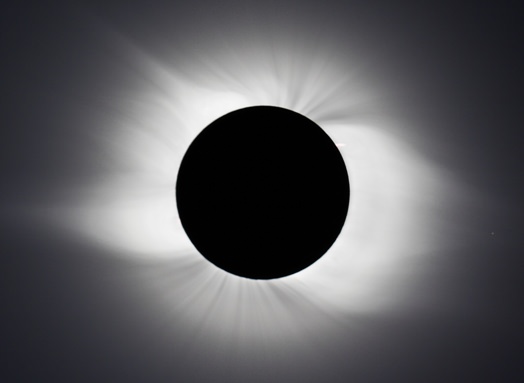
“After the success of last year’s competition, we challenged everybody again to take the best photographs of the solar system and beyond,” said Dallas Campbell, from “Bang Goes the Theory” on BBC,” who emceed the event along with Kukula. “We asked people to submit photographs in four categories: Earth and Space, Our Solar System, Deep Space, and Young Astronomy Photographer. We also added two new categories: People and Space and Best Newcomer.” Besides being the overall winner, Lowe’s image (top) was the winner of the Earth and Space category.
This stunning image of a total solar eclipse by Anthony Ayiomamitis from Greece won the “Our Solar System” category. “On eclipse day, the clouds were present everywhere and only one hour before first contact (partial phase) did the skies clear,” said Ayiomamitis “…and they cleared beautifully and with pristine transparency. There was a slight wind, especially at the top of the roof of the Institute of Nuclear Physics, but it was a very small price to pay.”
During an eclipse, the Sun’s corona is visible but this image captures even how the Sun’s magnetic fields warp and shape the super-heated gas of the corona into loops and streamers.
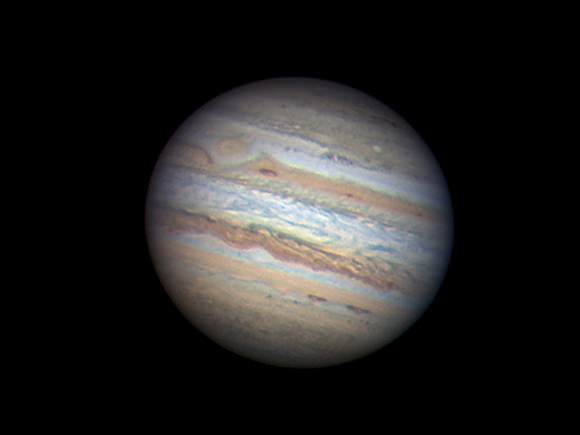
UK amateur astronomer Nick Smith was in attendance at the ceremony, and he was the runner-up in this category with this crisp image of Jupiter. He also received a “highly commended” prize for his image of the Sinus Iridium on the Moon.
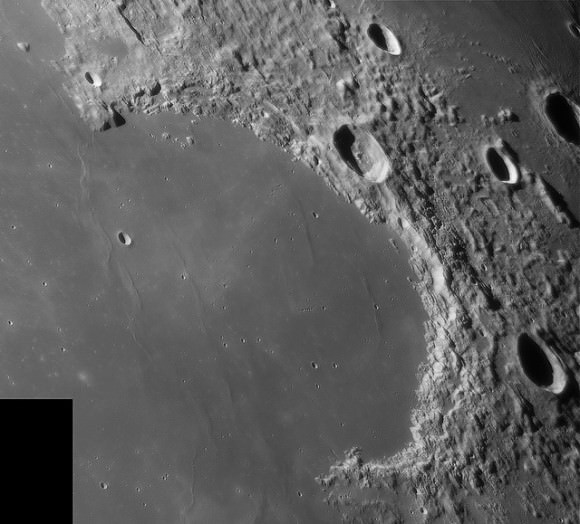
I had the chance to talk with Smith, and he said he used a Celestron C14 14-inch Schmidt-Cassegrain telescope with a Tele Vue 1.8x Barlow lens and a Lumenera Infinity 2-1M CCD camera. “I’ve been doing astrophotography for about 5 years,” he said. “Last year I had same results, one runner up and one highly commended, so I’m still waiting for that elusive win!”
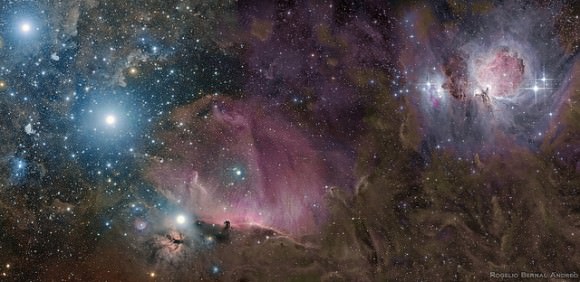
This absolutely stunning image taken by Rogelio Bernal Andreo of the USA shows wide angle view of the constellation Orion, with the three bright stars of Orion’s Belt on the left of this image. Here, however, a long exposure reveals an epic vista of dust and gas clouds which are too faint to be seen by the naked eye. This is an immense region of space hundreds of light years across. It contains several well-known astronomical sights, including the Horsehead Nebula (bottom center) and the Orion Nebula (top right).
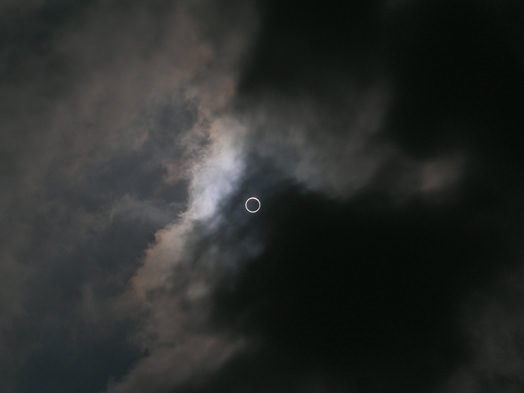
The fourth category was for young astrophotographers, and this stunning image of an annular solar eclipse as taken by 14 year old Dhruv Arvind Paranjpye from India. This type of perfect circle occurs when the Moon is too far from the Earth to completely cover the Sun’s disc, and Paranjpye caught the moment perfectly as a bright ring appeared as the uncovered part of the Sun shone around the edges of the Moon, and through a thin veil of clouds.
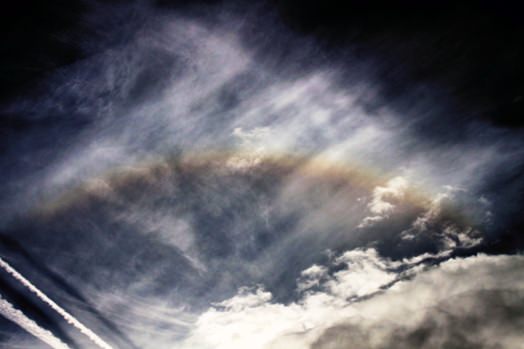
This runner-up winner in the young astronomer category was taken by Laurent V. Joli-Coeur from Canada, who is 13 years old. He was in attendance at the ROG for the awards ceremony, and commented that he was in the family car with his mother when he saw a beautiful solar halo through the roof. “I used my mother’s camera, a simple DLSR camera,” Joli-Coeur told Universe Today. “I asked my mother to stop the car and I took the picture in manual mode, and was very pleased how it turned out.” The camera was a Canon Digital Rebel DSLR camera with a Canon EF-S 18-55 mm lens. I asked if this picture was the first attempt at any astrophotography for him, but he said, “Actually I do a lot of lunar photography, and wide field imaging of the Milky Way and solar halos.” So, look for more images from him in the future.

I had to include this “Highly Commended” image in the young astronomers group by Elias Jordan, aged 15, who I follow on Twitter. “Thanks everyone!” he said on Twitter, “It was hard to keep the news from you for three weeks!”
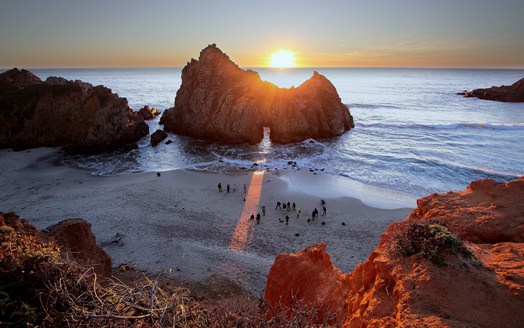
This is the winning image in a new category this year, “People and Space.” For a few days each year, the setting Sun shines directly through the archway of a large rock formation at Pfeiffer Beach in Big Sur, California, and Steven Christenson caught the event, plus the people watching. One of the judges, Sir Patrick Moore, said “It’s a rare event – it happens only once a year and the photographer has taken full advantage – the composition is fabulous.”

Another new category this year was “Best Newcomer,” won by Ken Mackintosh from the UK, with this image of the Whirlpool Galaxy.
“I’m lucky,” Mackintosh told Universe Today. “I just started doing astronomical photography a little over a year ago and I say I’m lucky because took this image about a year ago, and just barely scraped into the time constraint. Seeing the images in the other categories, I think next year I’ll really struggle to win anything because the winners this year are just jaw dropping.”
Mackintosh used Canon 450 DSLR, along with a Max Vision 127 telescope. He said he has been interested in astronomy since he was young, but wasn’t active in astronomy for many years. “I went into business and totally lost touch with astronomy until about a year ago when I was cruising around Flickr, and saw this contest, and my interest was totally reignited. Taking images like this, there’s a lot of work and frustration but when you get a good one, it’s totally worth it, and it keeps you going. I’m so glad they’ve started this competition,as it really provided a lot of motivation for me.”
Amazingly, he took this image from his back yard garden in Sussex, so he wants others interested in astrophotography to know that even in urban areas, astronomy and astrophography can be done. “Just in the past few years the equipment has become available at reasonable prices that is powerful enough to take images like this,” he said. “I can’t stress enough this is actually not too difficult to do, so anyone who has had interest in astronomy and photography, it is not that difficult. The difficulty comes in the kind of finesse and artistry to finish the images. It’s almost like the artistic side is as difficult as the technical. But as the technology improves, that side of it will become much easier.”
The Astronomy Photographer of the Year competition started in 2009 for the International Year of Astronomy. It was so popular that the organizers and sponsors decided to do it again this year. You can find info on the websites below on how to enter in 2011.
To see all the winning astronomy pictures in the six categories, see the Royal Observatory Greenwich website, or you can see all the images submitted on the Flickr Astronomy Photographer of the Year page. And if you live in the UK or visit there soon, you can see an exhibit of the Astronomy Photographer of the Year winners at the ROG from now until February 27, 2011.
The ROG is a must-see destination for any astronomy enthusiast, and is a wonderful location that is full of history, beauty and hands-on learning. There you can straddle the Prime Meridian, see early telescopes and time pieces and look across the same beautiful vistas that early British astronomers saw from the hilltop home of the observatory.
The ROG website also has a plethora of tips for how to take astrophotos.
And if want more than just images, the ROG online shop has some items for sale from this year’s winners.

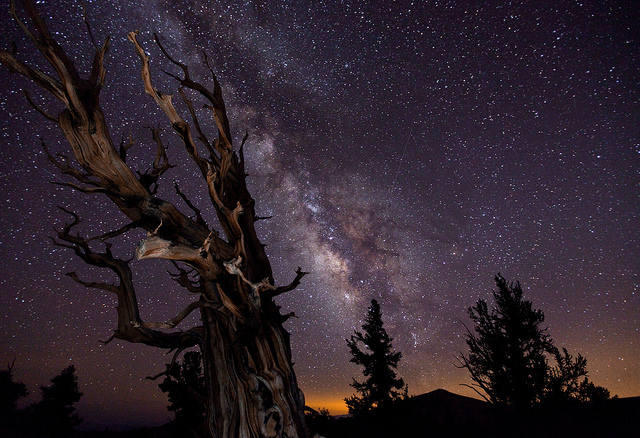
these are some beautiful pictures…
and does anyone know if the Orion Deep Field one is true color? Because the reds and blues give me the impression that they are the artificial NASA-colors, but if that was the case, I would expect all that dust to be more red…
“does anyone know if the Orion Deep Field one is true color?”
From his web site I gather that this is an LRGB composite that is approximately correct in color balance. Remember there are many (blue) reflection nebulae among the (red) emission nebulae and the (brown) dusty regions in the picture. This has an annotated description: http://antwrp.gsfc.nasa.gov/apod/ap090929.html
Some truly amazing work.